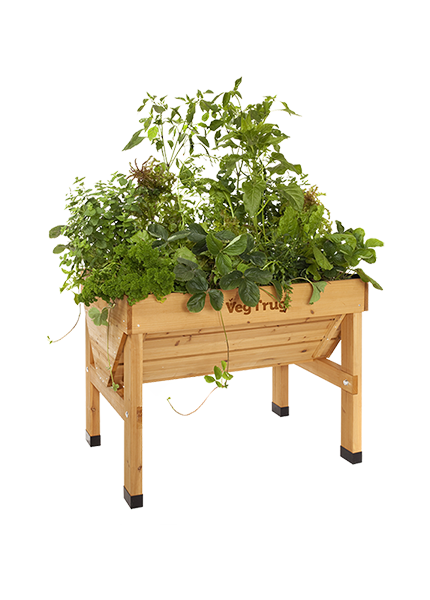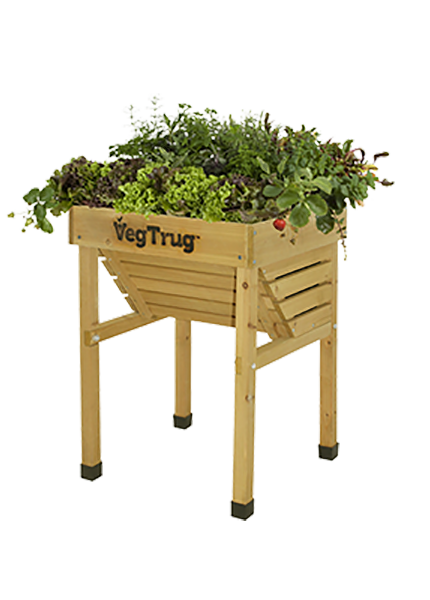Who doesn’t love a little sage and onion? Sage is a versatile herb, with a powerful flavour. Add a few leaves to a dish or make a healthy tea. Who doesn’t love a little sage and onion? Sage is a versatile herb, with a powerful flavour. Add a few leaves to a dish or make a healthy tea.
It’s packed with nutrients and antioxidants and it looks good too, so you won’t need to confine it to a herb garden. What’s more sage is really easy to grow. It can be planted in the ground or a container like a VegTrug.
Read on for more about how to grow sage.
Sage is easiest when it’s grown from small plants and sage does well in pots or containers. In the ground, just plant them around two feet apart. If you want to grow from seeds or cuttings, plant in the spring in small pots. You can sow sage outside a couple of weeks before the final frosts. It likes the soil to be between 15°c and 20°c and in a sunny, but sheltered place. From seed you should see the first shoots in two-to three weeks. Add grit or sand drainage to heavy clay soil if needed.
Sage is a member of the mint family. Mint and cucumbers compete for the same nutrients and sage will also prevent cucumbers from growing so keep these well apart. Sage, however, grows well with carrots, tomatoes, parsley, strawberries and rosemary.
Healthy sage will grow between 12 and 30 inches high, just keep your young sage plants watered regularly and make sure the soil is well drained. Most herbs don’t thrive when the roots are waterlogged. A classic VegTrug is a perfect container when it comes to how to grow sage, because it’s raised which allows for drainage. Don’t let your sage dry out though, especially in the early days. In any case, full sun will really pack flavour into those pretty leaves.
Trim sage after flowering to encourage new growth but existing woody stems won’t produce new growth. Using slow release fertilisers at the start and end of summer will help sage thrive. In winter some leaves might become damaged, so cover with a fleece.
Bugs and diseases are part of the growing cycle and although sage is relatively hassle-free, if you want to know how to grow sage well, you should be aware of the potential problems too.
Sage can suffer from powdery mildew, a fungal infection that appears as a white powder on leaves, stems and fruit. Keeping humidity levels low, removing infected leaves (but dispose of them carefully and not in the compost, where it can spread further0 and spacing out plants can help. Mildew doesn’t like direct contact with water.
The Rosemary beetle is a red and purple metallic-looking beetle, whose larvae will strip leaves and plants. The beetle can be seen and thus removed by hand. Red spider mites are tiny mites related to spiders and often a quick blast with a mist hose setting will remove them.
Capsid bugs are sap-suckers that are found on sage. Generally speaking healthy sage can handle them in normal numbers.
Harvest sage as and when you need the leaves. It will grow all year but is best in the summer. It’s got a powerful flavour so only a small amount is usually required. Dry your sage in a warm, ventilated place and store in an air-tight container. Or add chopped leaves to ice cube moulds and freeze in water. Pop one out as you need it.
How to grow sage is part of the VegTrug Grower’s Guide.

